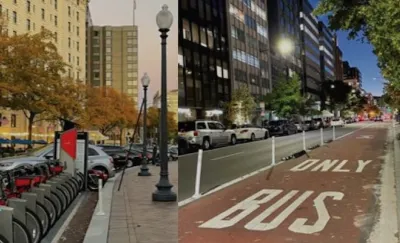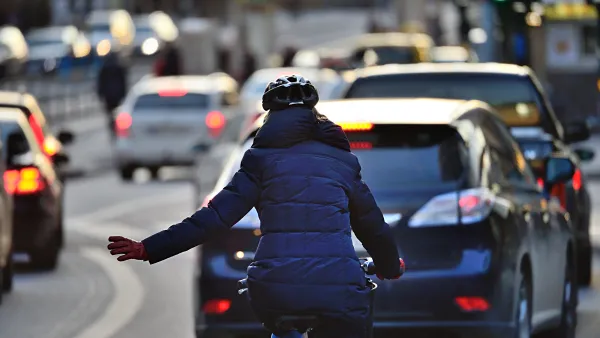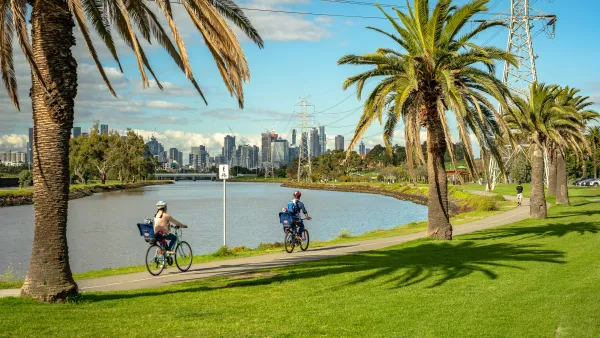Motor vehicle travel benefits users but also imposes large economic, social, and environmental costs. With better planning, our needs can be met with less vehicle travel. A new ITE report describes why and how to optimize the amount we drive.

Motor vehicle travel provides many benefits, but also imposes large economic, social and economic costs. A new Institute of Transportation Engineers report, Vehicle-Miles Traveled (VMT) as a Metric for Sustainability, can help guide planning to optimize the amount people drive.
This is an important and timely issue. Per capita vehicle-miles traveled (VMT) grew steadily during the Twentieth Century. During the growth period, transportation agencies applied “predict and provide” planning practices that contributed to a self-reinforcing cycle of expanded roads, more parking subsidies, reduced non-auto travel options, and sprawled development patterns that created automobile-dependent communities where it is difficult to get around without a car.
Per capita motor vehicle travel peaked about 2005, and current demographic and economic trends (aging population, rising vehicle costs, changing consumer preferences, increased health and environmental concerns) are increasing non-auto travel demands. In response, many transportation agencies are shifting from mobility-oriented planning, which assumed that our goal is to maximize travel speed and distance, to accessibility-oriented planning, which recognizes the ultimate goal of transportation is to provide access to services and activities, and policies intended to increase mobility often reduce accessibility in other ways.
To achieve sustainability goals, many jurisdictions are now reforming their planning practices to support accessibility-based planning. Some have established vehicle travel reduction targets to help guide these reforms. These policies can be justified for several reasons: to support more multimodal planning, to reduce traffic congestion, to reduce road and parking infrastructure costs, to reduce pollution emissions, and to improve community livability, public fitness and health.
This report discusses how much vehicle travel can be reduced, appropriate analysis methods and planning practices, and effective VMT reduction strategies. It also includes case studies from locations that optimized vehicle travel in the United States and internationally.
FULL STORY: VMT as a Metric for Sustainability

National Parks Layoffs Will Cause Communities to Lose Billions
Thousands of essential park workers were laid off this week, just before the busy spring break season.

Retro-silient?: America’s First “Eco-burb,” The Woodlands Turns 50
A master-planned community north of Houston offers lessons on green infrastructure and resilient design, but falls short of its founder’s lofty affordability and walkability goals.

Delivering for America Plan Will Downgrade Mail Service in at Least 49.5 Percent of Zip Codes
Republican and Democrat lawmakers criticize the plan for its disproportionate negative impact on rural communities.

Test News Post 1
This is a summary

Test News Headline 46
Test for the image on the front page.

Balancing Bombs and Butterflies: How the National Guard Protects a Rare Species
The National Guard at Fort Indiantown Gap uses GIS technology and land management strategies to balance military training with conservation efforts, ensuring the survival of the rare eastern regal fritillary butterfly.
Urban Design for Planners 1: Software Tools
This six-course series explores essential urban design concepts using open source software and equips planners with the tools they need to participate fully in the urban design process.
Planning for Universal Design
Learn the tools for implementing Universal Design in planning regulations.
EMC Planning Group, Inc.
Planetizen
Planetizen
Mpact (formerly Rail~Volution)
Great Falls Development Authority, Inc.
HUDs Office of Policy Development and Research
NYU Wagner Graduate School of Public Service





























